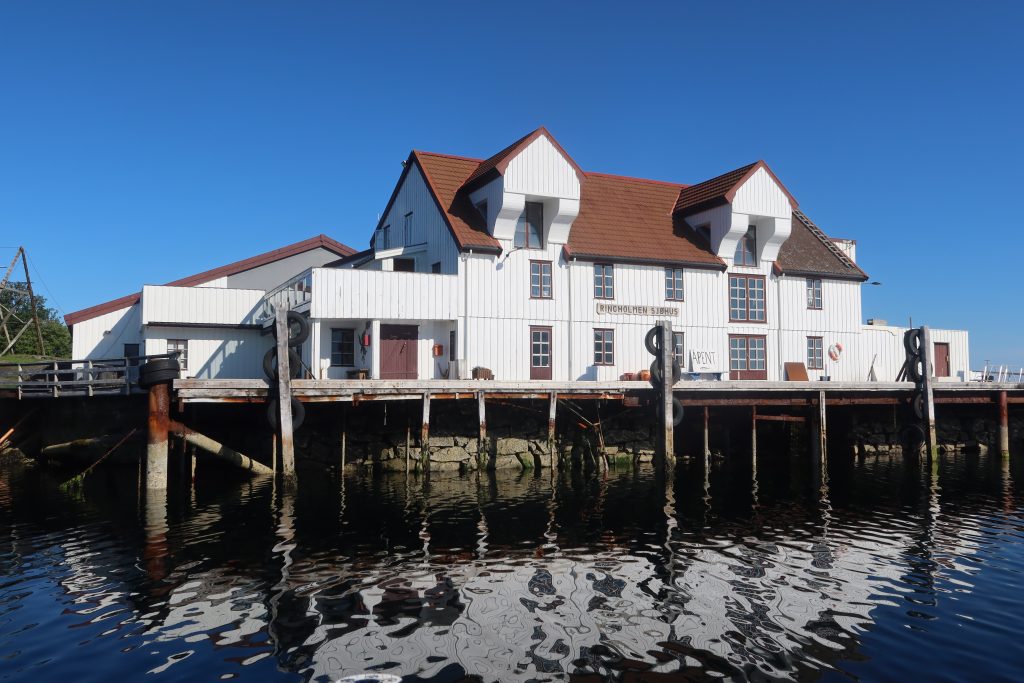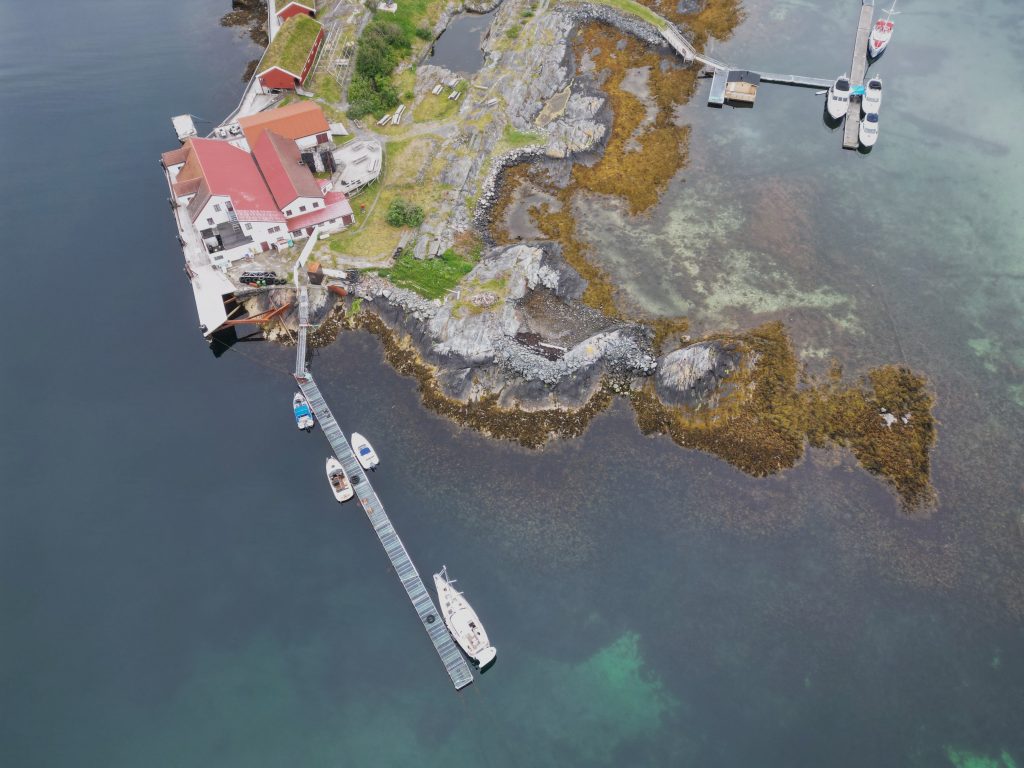We are now in our final few days before having to drop the boat at Hitra, so we decided to head off to a small island to the east of Kristiansund called Ringholmen. This island was one of the many whose purpose started originally as production of clipfish. Klippfisk is the staple of this area and Kristiansund remains one of the key production centres for this dried, salted cod. In a less industrialised era of production though, much of the klippfisk was produced on islands like Grip and Ringholmen and this is where the fishermen lived and worked – as close to the fishing grounds as they could with the space to dry and process the fish. The fish would be laid out on the rocks to dry and often taken in at night to ensure that it didn’t get re-hydrated and ruined.

Just before WWII a pier was built on Ringholmen and this helped boost production with the building of a large processing shed. This stayed in production until the mid-1980s and in the late 1980s it was bought by a retired airline pilot who converted it into a hotel and restaurant – hence us visiting. The recent addition of a floating sauna meant that it was a tough afternoon, but after the stresses of a sauna (!) we then ate in the restaurant for the evening. A plate of bacalao rounded the day off nicely. Bacalao stems from the export of clipfish to Spain and Portugal. In return for the fish, the traders brought back spices, tomatoes and various other Mediterranean produce and the traditional bacalao dish emerged as a staple for the Møre region. Bacalao usually includes chilli, onion, potatoes, garlic tomatoes, bay leaves, olive oil and of course clipfish – a hearty stew …..

